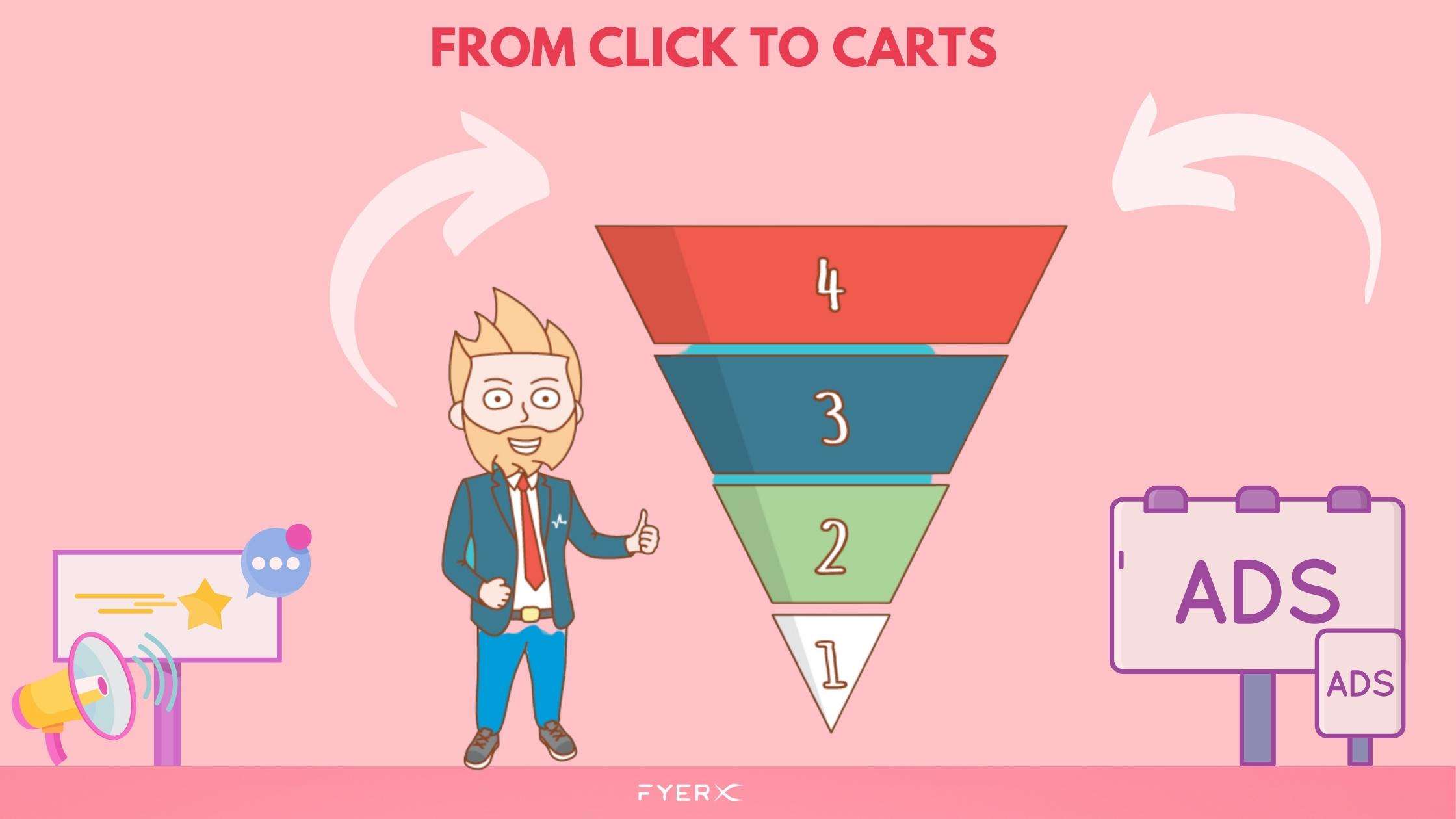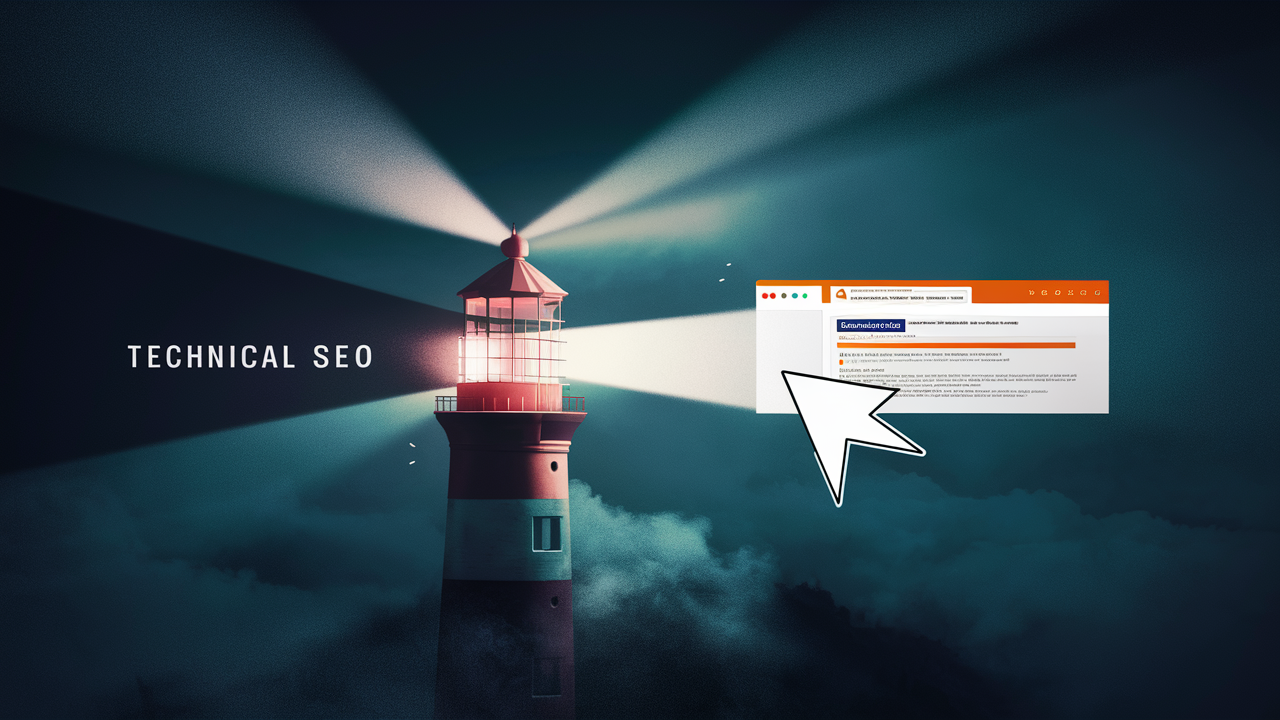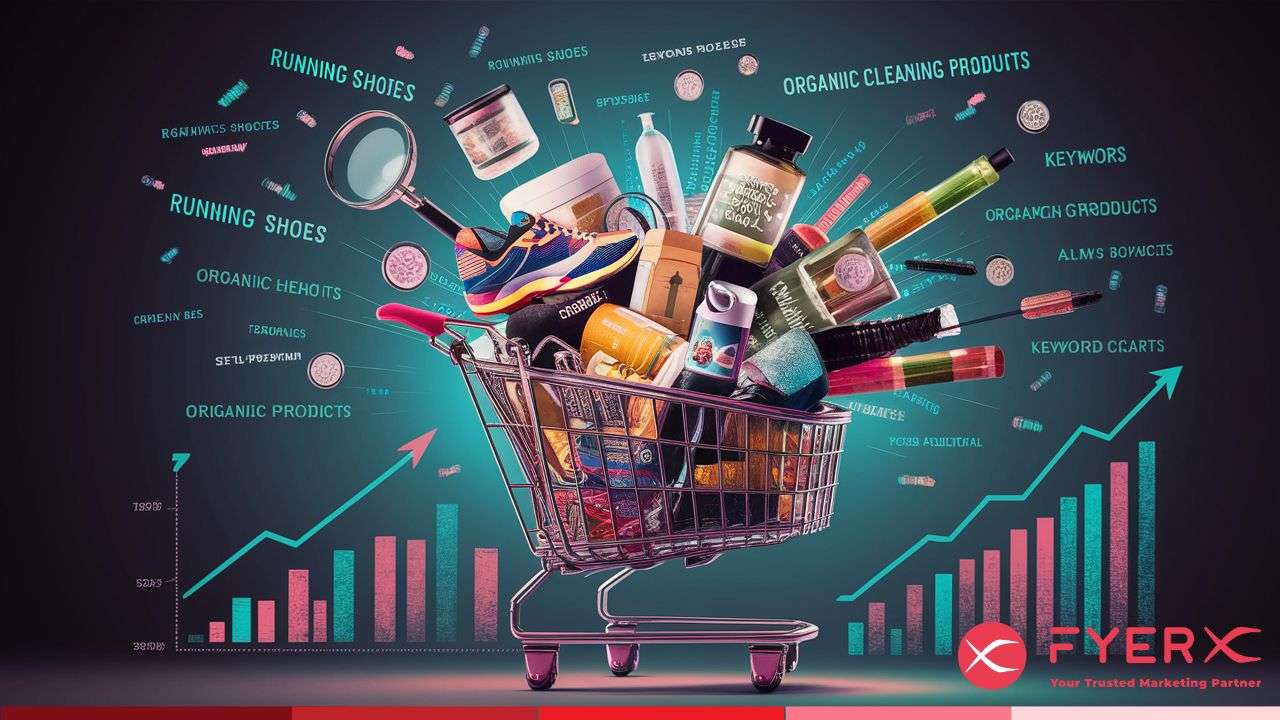
What Is the Marketing Funnel and How Does It Work?
- fyerx
- June 13, 2022
- Digital Marketing, Featured, Social media
- Digital marketing
- 1 Comment
Do you know how your marketing funnel looks?
According to Salesforce data, 69% of businesses have yet to identify their marketing funnel. Those that do will, nevertheless, see results. According to Semrush, 71% of marketers who use “how-to” manuals as a top-of-funnel strategy receive positive results.
We’ll go over the different stages of the marketing funnel and what you need to do to improve leads and sales at each one in this blog post. We’ll also go over some marketing funnel tactics that will help you convert more leads.
What Are the Stages of the Marketing Funnel?
Many businesses have their own marketing funnel stages. HubSpot’s Flywheel model, for example, has grown in prominence in recent years.
The following are the primary steps of the marketing funnel for the purposes of this article:
- Awareness/Attention at the Top of the Funnel
- Interest/Consideration in the Middle of the Funnel
- Intent/Action at the Bottom of the Funnel
- Loyalty/Advocacy at the End of the Funnel
Being aware/paying attention
The first and most critical stage of the marketing funnel is awareness. According to a poll conducted by the Content Marketing Institute, 88 percent of marketers believe that content marketing is the most effective way to raise brand awareness.
When potential buyers become aware of your brand or product, this is known as brand awareness. They can come across your website in the search results or encounter one of your advertisements on social media.
You want to focus on bringing your brand in front of as many individuals as possible during the awareness stage. This can be accomplished through content marketing, search engine optimization (SEO), social media marketing, and paid advertising, among other methods.
Consideration/Interest
The second stage of the marketing funnel is interest or consideration. At this step in the marketing funnel, potential clients are aware of your brand and are beginning to learn more about it. They may have arrived at your site after reading one of your blog posts, watching a product video, or reading one of your blog posts.
At this stage, you should continue to provide quality content to potential clients in order to help them learn more about your product or service. This can be accomplished through blog articles, videos, infographics, case studies, e-books, and webinars.
Goal/Action
Intention or action is the third stage of the marketing funnel. Potential clients are interested in your product or service and considering making a purchase at this point in the marketing funnel. They may add your goods to their shopping or request a demo for additional details.
Advocacy/Loyalty
Loyalty or advocacy is the fourth and final stage of the marketing funnel. According to the Content Marketing Institute survey, 78 percent of marketers believe brand loyalty is one of the most effective uses of content marketing.
Customers have made a purchase and are using your product or service at this point. It’s critical at this point to continue offering good content and help to your clients.
4 Main Marketing Funnel Strategies

You generate awareness and interest in your product or service at the top of the marketing funnel. TOFU strategies are what they’re termed (top-of-funnel).
According to Semrush, 95% of marketers rely on TOFU techniques, making this the most common step in your marketing funnel.
At this point, the goal is to reach out to as many potential clients as possible and pique their interest in your product.
The following are examples of top-of-funnel KPIs:
- organic sessions
- ad impressions
- ad frequency
- pages per session
- traffic sources
Blog articles, social media material, videos, and paid digital ads are some of the greatest content forms for this stage.
Focus on building awareness and interest while creating content for the top stages of the marketing funnel. This implies that your material must be both instructive and informative. You can also utilize storytelling and humor to grab people’s attention.
Remember that your purpose at this point isn’t to sell your product or service, but to pique people’s curiosity about what you have to offer. You’ll produce more leads and sales at each level of your marketing funnel if you create engaging and helpful content.
Use Social Media To Share Your Brand Story
The basis or core of your marketing funnel is your brand story. It’s the story you want consumers to connect or tie up with your products, services, and marketing to.
Brand stories, according to studies, drive ROI. According to data from Head-stream, 55 percent of customers are more likely to buy from a business if they like the story behind it. Furthermore, 44% said they will tell others about the story in the future.
You can publish blog entries or generate social media material that recounts how your company was created to share your brand narrative. You can also create or make films or podcasts that showcase the personality of your company.
Make sure your tale is genuine, relatable, and engaging when telling it. Share examples and stories of your company’s values, culture, and mission.
Patagonia, for example, is a company noted for its environmental dedication. Theirs is an adventure, an exploration, and a conservation story.
This brand story has helped them attract customers who are interested in the outdoors and care about the environment.
People buy from them not only because of the quality of their products but also because of their belief in Patagonia as a brand.
Become an Advocate for Causes that Matter to Your Brand and Customers
According to an Edelman, research Earned Brand discovered that values-based communication is just as successful in driving purchase intent as product-based communication.
This means you’re more likely to gain and earn your clients’ business if you advocate for topics they care about.
P&G, for example, is a corporation founded on the principle of giving back. They put a third of their profits or revenue into grassroots organizations that work to create long-term change.
By marketing and advertising to people who wish to make the world a better place, P&G has grown into a billion-dollar corporation.
You may accomplish the same thing by identifying issues or causes that matter to your target market and promoting them through marketing campaigns and strategies.
It could be anything from environmental concerns to social justice concerns. The crucial step is to match your marketing activities with causes that your target market cares about and to demonstrate that you care as well.
This increases their likelihood of doing business with you, as well as their likelihood of becoming brand champions and promoting your company to their friends and family.
Do you know what causes are important to your target market?
Make Use of Paid Advertisements
Paid ads are an important component of your digital marketing strategy. They may target or focus on specific interests, demographics, and even places besides helping you reach a larger audience.
According to eMarketer’s data, paid advertising is a reliable approach to raising brand awareness.
For your top-of-funnel marketing plan, there are many paid ad possibilities, including:
- Advertisements on podcasts
- Ads on YouTube and social media
- Ads by Google
Consider where your target audience spends their time online when deciding which platforms to advertise on. This study will ensure that you aren’t wasting money on advertising that isn’t being seen.
If you’re targeting young individuals, for example, you should concentrate your paid marketing strategy on sites like Snapchat and Instagram. If you’re targeting and focusing on an older population, however, LinkedIn and Facebook are better choices.
Design your ads with brand recognition in mind once you’ve decided which platforms to employ.
This could entail developing a story-driven commercial or using emotionally charged language. The idea is to pique potential customers’ interest in your product or service so that they can progress through the stages of your marketing funnel.
Create Blogs that are SEO-Friendly
According to studies, 60 percent of buyers believe blog postings are useful in the early phases of the marketing funnel.
Blogs are a great approach to creating leads since they allow you to demonstrate your business knowledge while also attracting readers who are unfamiliar with your brand.
Include important keywords throughout your blog entries to make them more effective.
This will boost your search engine ranking, making it easier for visitors to find your blog when they’re looking for information on the topics you cover.
Incorporate calls-to-action (CTAs) throughout your blog content as well.
A call to action is a prompt that encourages readers to do something particular, such as visit your website, download a white paper or e-book, or sign up for a newsletter.
You may guide readers to the next stage of their buyer journey by incorporating CTAs, which will move them down your marketing funnel phases.
Check out these recommendations on how to rank a blog if you want to increase your site’s ranking even further.
4 Marketing Funnel Strategies in the Middle
The purpose of the middle stage of your marketing funnel is to nurture or develop leads and move them closer to making a purchase decision or buying a product. It’s also about weeding out leads who aren’t a good fit for your company. MOFU is another name for this stage (middle-of-funnel).
At this time, your KPIs are mostly concerned with cost savings. You don’t want to send content to people who aren’t interested, therefore your placements should be more targeted.
KPIs for the middle funnel include:
App installs, lead volume, and direct message replies
You should also consider how to keep customers coming back for more.
During this level, you can employ the following strategies:
- Creating lead magnets that require an email address to download, such as e-books or white papers.
- Offering free product trials or demonstrations.
- Creating email marketing or we can say link-building strategies to keep prospects interested.
- Creating re-targeting advertising for visitors who haven’t converted on your site.
In the centre of your marketing funnel, there are four tactics you may utilize to generate more leads and sales.
Make Content for FAQs
In the middle step of your marketing funnel, frequently asked questions are vital for content marketing.
FAQ pages can be a wonderful method to target specific keywords in search while also addressing user concerns and hesitations.
Use keyword research tools like Uber-suggest to identify queries that your target buyers are asking.
You can also search for industry-related queries on social media and forums. You can locate those questions by searching for prominent industry hashtags. Another source of inspiration is Google’s “people also asked” questions.
Begin thinking about similar questions that your target clients are likely to ask once you’ve gathered a list of inquiries.
You can then answer these questions with blog entries, infographics, or even videos. On your website, you can also establish a separate FAQ page.
FAQs can help you generate organic traffic from search engines as well as attract leads further down the marketing funnel.
Include Case Studies on Your Website
According to HubSpot, case studies are one of the most used types of material utilized in marketing strategies by 13% of marketers.
Case studies are now the fifth most popular content type, trailing only visual material, blogs, and ebooks.
Now is the moment to start incorporating case studies on your website if you haven’t before.
Case studies nurture customers in the middle of your digital marketing funnel by showing how your product or service helps organizations achieve their objectives in real-world scenarios.
This develops confidence and credibility, all of which are necessary for converting leads into consumers.
Case studies can also be used in sponsored ad campaigns to boost conversion rates.
Check out the video below to learn more about crafting effective case studies.
Take use of Re-targeting
How can you find out if a lead is interested if they haven’t already contacted you?
Remarketing (also known as re-targeting) is a marketing strategy that presents your adverts to people who have already shown interest in your brand. They may have looked at your website or followed you on social media.
You’ll need to put a pixel from an ad platform on your website to track users as they move around the internet in order to use this method. Here’s how you get started with retargeting on Facebook and Google Ads.
Once you’ve placed the pixel, you’ll be able to build personalized advertising that will follow your leads throughout the web as they browse.
You could, for example, design an ad that promotes your product to people who have visited your website but have not yet purchased it.
Alternatively, you may provide a discount to anyone who has visited your website in the previous week.
Installing a pixel on your website is a highly effective approach to maintaining your brand at the top of your funnel. It can also enhance the likelihood of leads returning to your website and becoming clients.
Share Customer Success Stories
Research shows 40 percent of customers follow brands based on recommendations from friends or family. As well, 91 percent read online reviews before making a purchase.
That is the power of social proof. One of the best ways to show social proof is through customer stories.
These can take the form of testimonials on your website, or reviews on product pages.
You can also create more in-depth case studies showing how your product or service helped a customer achieve their goals.
For example, ClearVoice has a dedicated Customer Stories page on its website, which features in-depth interviews with customers about how they use the platform to drive results.
This method not only raises your reputation and authority but also increases your social proof.
Furthermore, prospects will be more willing to conduct business with you if they regard you as a legitimate and trustworthy organization.
4 Strategies for the Bottom of the Marketing Funnel
BOFU (bottom-of-funnel optimization) is all about conversion.
Your goal at this point is to convince prospects to take the necessary action, whether it’s signing up for a free trial, joining your email list, or purchasing something.
The following are KPIs for the bottom of the marketing funnel:
customers lifetime value, conversions sales, shop visits.
Here are four conversion-boosting methods at the bottom of your marketing funnel.
Make a Video of Someone Demonstrating How to Use Your Product
When clients reach the bottom of your marketing funnel, they should have a clear understanding of the value you provide.
They’re probably intrigued by trying your product, but they’re hesitant to buy it until they see it in action.
Create a demo of your product in action to alleviate their anxieties and enhance the likelihood of conversion.
This might be a film or an interactive tool that simulates how your product works.
If you’re selling apparel, for example, let your consumer see how it looks on their body. Gucci executed this by showing customers how their shoes would look on their feet using Snapchat’s AR filters.
You may boost the likelihood of a sale by offering customers a realistic glimpse of what your product looks like and how it operates.
Write Blog Posts That Are Highly Targeted
You should focus on offering as much value to your audience as possible at the bottom of your marketing funnel.
One approach to do this is to write blog entries that are specifically tailored to their wants and needs.
You could, for example, publish a blog article about the value of data tracking in marketing if you provide software that helps marketing teams track customer data.
This would be an excellent resource for marketing teams considering your software, and it would assist you in generating leads and sales at this level.
You may even go a step farther and discuss specific ways your solution has alleviated a customer’s problem.
You may boost the likelihood that your audience will make a purchase from you by giving value and addressing their needs.
Furthermore, evidence suggests that marketers who prioritize blogging are 13 times more likely to receive a favorable return on investment.
Provide Discounts or Coupons
In order to enhance conversions, coupons and discounts are frequently presented in the middle of your marketing funnel.
Six out of ten free trials result in paid subscriptions, according to data. This close rate is significantly greater for B2B enterprises, at roughly 66 percent, or two out of every three trials converting. B2C accounts for about 57 percent of all sales.
What if, on the other hand, your customer hasn’t spent enough time with your product to convert?
Should you cancel the offer and evict them, even though they might make a purchase if they stay longer?
Obviously not.
If you think the customer just needs a little more time, there’s nothing wrong with extending a voucher or discount.
It’s preferable to maintain them in your marketing funnel (and convert them eventually) than to lose them completely.
Extending coupons and discounts can help you boost conversions, but only if you do it at the correct moment. You risk losing potential profits if you expand too soon.
If you wait too long to make your offer, the consumer may have already made up their mind and moved on.
Finding the right balance is crucial to optimizing the efficacy of your marketing funnel.
Make Pricing Easy to Understand and Customize
When a buyer reaches the bottom of your marketing funnel, they’ll want to know how much anything costs.
Things can get a little complicated here. A conversion’s price can make or break it. Customers may switch to a competition if they believe your price is too expensive.
If your pricing is too low, though, people may question the quality of your product.
The easiest method to fight this problem is to make your pricing as open as possible.
Make sure that all of your rates are clearly stated on your website or in your marketing materials. If you offer discounts or a free trial, make sure to include that information as well.
Customers should also be able to modify their orders so that they obtain exactly what they want.
According to the CXL Institute, designing your pricing page from high to low has also been proved to enhance conversions.
WPForms provides an example of this.
You don’t want a customer to get to the bottom of your marketing funnel just to be confused or turned off by your cost.
Being open and honest about your costs will help you avoid problems and enhance conversions.
In this article, you’ll learn how to develop a pricing page that converts.
Conclusion: Stages of the Marketing Funnel
Now that you’ve learned about all of the steps of the digital marketing funnel, it’s time to start planning your approach.
Understanding who your customers are and what they want also how you can provide that experience is the first step.
Begin developing content that will lead them through each stage of the marketing funnel from there.
For optimal impact, remember to personalize your marketing message and methods to each level of the marketing funnel.
The sooner you get started, the more leads and sales you’ll be able to create.
Related Posts
- fyerx
- March 14, 2022
7 Benefits Of Hiring A Marketing Agency Vs. An In-House Marketing Team
Table of contents 1. A Team Of Experts 2. Access to Tools and Platforms 3. Unmatched Experience ..

- fyerx
- August 8, 2022
Stopping Advertising to Save Money is Like Stopping Your Watch to Save Time
Putting an end to advertising in order to save money is similar to taking the battery out of yo ..





